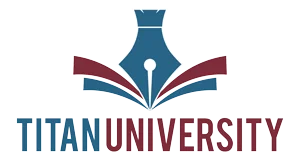MODULE 2: FORKLIFT SAFETY REQUIREMENTS
[vc_row][vc_column][vc_single_image image=”11762″ img_size=”full”][/vc_column][/vc_row][vc_row][vc_column][ultimate_heading main_heading=”Requirements Placed on Projects, Operators, and Forklifts” margin_design_tab_text=””][/ultimate_heading][vc_column_text]Now let’s look at some requirements placed on projects, operators, and the Forklifts themselves.
If hoisting or lifting personnel, a Critical Lift Plan must be submitted along with the Crane Operator requirements prior to the work. Even though a forklift is not a crane, because personnel are being lifted, a crane operator must operate the forklift in this case.
Crane operator requirements will include certifications, qualifications, and designations. The qualifications and designations must also be included in the AHA and provided to the GDA. We’ve included a USACE Critical Lift Plan in your course materials.[/vc_column_text][ultimate_heading main_heading=”Crane Operator Certification and Qualification” margin_design_tab_text=””][/ultimate_heading][/vc_column][/vc_row][vc_row][vc_column][vc_column_text]Prior to the work, the Crane Operator must provide a Current certification by a Nationally Accredited Crane Operator Testing Organization. But, if there isn’t an accredited testing agency offering certification examinations for a particular type of equipment, the operator can be deemed certified to operate that equipment if he or she has been certified for the type and capacity that is most similar to that equipment for which a certification examination is available.
Employer qualification and designation on the equipment is still required. This certification must be for both written and operational testing.[/vc_column_text][ultimate_heading main_heading=”Medical Examination” margin_design_tab_text=””][/ultimate_heading][/vc_column][/vc_row][vc_row][vc_column][vc_column_text]Because a Critical Lift is involved, a physical examination of the operator is required. All crane operators must be physically qualified to operate the equipment, this is especially important as they are hoisting others. Physical examinations for operators are required every 2 years. An employer can also require re-examination if, and any time a condition is observed that may impact safe operation.
Written proof of the physical examination is required and signed by either a Medical Doctor (MD) or a Doctor of Osteopathy (DO). There must be a statement that the operator has had a physical examination and meets the medical requirements. The Medical Examination must be submitted to the GDA for acceptance prior to allowing an operator to operate the equipment.[/vc_column_text][ultimate_heading main_heading=”Designation” margin_design_tab_text=””][/ultimate_heading][vc_column_text]Once the employer reviews the Operator Qualification he or she is confident with the operators’ qualifications and understanding of USACE and OSHA crane safety requirements, the employer designates the operator in writing, for the equipment to be operated. This designation should be submitted along with the Medical Examination.
To be designated, Crane Operators must be capable of communicating effectively with:
- The lift supervisor
- Riggers
- Signal persons
- Other employees on site in the area where the lift is being operated.
[/vc_column_text][vc_column_text]Crane operators must be able to read, write, and comprehend in the language of the crane manufacturer’s operation and maintenance instruction materials, exhibit acceptable arithmetic skills and load/capacity chart usage, and use written manufacturer procedures applicable to the type and configuration of equipment for which qualification is being sought.[/vc_column_text][vc_single_image image=”11764″ img_size=”full”][ultimate_heading main_heading=”Supporting Work Platforms” margin_design_tab_text=””][/ultimate_heading][vc_column_text]Sometimes certain forklift types may be is used to support work platforms. If this becomes the case, the following requirements must be followed with regard to the Forklift itself.
- The operator’s manual must be maintained at the work site and on the forklift
- The manufacturer’s platform specifications must be maintained on site and those specifications must reference ASME B56-6. A data plate can also be used in lieu of the manufacturer’s specifications as long as it references ASME B56.6
- If the platform is not manufactured by, or for, the company that manufactures the forklift, a letter must be obtained from the forklift manufacturer that states the machine is compatible with the platform design. This letter must be kept on site and a copy provided to the GDA.
- The platform must be securely attached to the lifting carriage and forks.
- The lifting carriage and forks must be secured from pivoting forward.
- If the truck is equipped with a rotator, the rotator must be deactivated.
- Personnel must always be protected from moving parts while in their normal working positions
[/vc_column_text][ultimate_heading main_heading=”Operation Safety” margin_design_tab_text=””][/ultimate_heading][vc_column_text]The below safety requirements are mandatory on all Government Construction Projects, if applicable to the tasks. A copy of these requirements can be found in your course materials.
- Overhead protection must be provided as necessary for the operating conditions
- The lifting operation must be done smoothly throughout the entire range of the lift
- If the machine has lift limiting devices and latches, they must be functional
- Prior to the lift, the operator must verify firm footing
- A fall restraint system shall be used in accordance with the EM 385-1-1 Section 21 and personnel will maintain a firm footing on the platform at all times. Section 21 can be found in your course materials
- The platform shall not be tilted forward or rearward.
- The platform shall be lowered to the ground level for personnel to enter and exit.
- The operator shall remain at the controls whenever personnel are elevated.
- The forklift shall not be moved horizontally while occupied.
- Before elevating personnel, forklift travel controls must be in neutral and the parking brake set.
- The operator shall verify that the mast or boom travel is vertical and will not operate on a slope unless the RT forklift is level.
- The operator shall verify that the path of the platform travel is clear of hazards, such as electrical wires, overhead obstructions, scaffolding, storage racks, and other obstacles.
- Before elevating personnel, the work area must be marked to warn of work by elevated personnel.
- Driving a forklift equipped with a personnel work platform in a raised position or with personnel on the platform is forbidden.
- Before raising or lowering the platform, the operator shall alert the personnel on the platform and then move the platform smoothly and with caution as requested by the occupants.
- The combined weight of the platform, load, and personnel shall not exceed one-third of the capacity at the related load center position as indicated on the information plate(s) of the RT forklift truck.
[/vc_column_text][ultimate_heading main_heading=”Fall Protection” margin_design_tab_text=””][/ultimate_heading][vc_column_text]Whenever workers are exposed to falls from unprotected sides or edges, fall protection measures must be put into place. The work platform must have railing and the workers on the platform must use fall restraint with a properly sized lanyard that will prevent the worker from over-reaching and falling. Depending on the actual situation, other fall protection may be needed.[/vc_column_text][/vc_column][/vc_row][vc_row][vc_column][ultimate_heading main_heading=”MODULE 2 QUIZ” margin_design_tab_text=””]Please click the Module 2 Quiz below and begin the short quiz. You must pass with a score of 70% or above. However, you can take the quiz as many times as necessary. Once you’ve completed the quiz, you can take the final chapter lesson.[/ultimate_heading][/vc_column][/vc_row]


